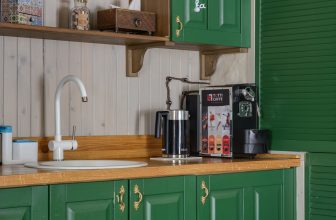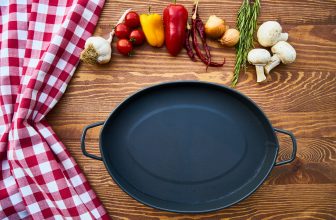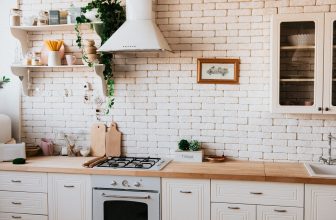Cleaning with bicarbonate is popular too much in the home and in this article, we go through lots of good cleaning tips with bicarbonate, but what exactly is bicarbonate?
What is bicarbonate?
Bicarbonate or sodium bicarbonate (NaHCO3) is a natural product found naturally in our nature (e.g. in the sea and water, but also the ground).
Why clean bicarbonate? Bicarbonate acts as a natural antiseptic (bacterial killer and disinfectant) and neutralizes odors and has mild abrasive properties, which makes bicarbonate in particular popular and suitable for cleaning in the home. Bicarbonate does not contain corrosive substances that are often found in chemicals and in the cleaning and washing agents you can buy for cleaning – but which you do not need when you instead use a natural agent such as bicarbonate.
Are bicarbonate and baking soda the same thing? No, they are similar but not the same product – bicarbonate is a pure product while baking powder is a mixture of bicarbonate and other ingredients such as one or more acids (to make eg dough and batter rise without using yeast).
Bicarbonate has many uses, of course in cooking, but also for cleaning and tidying and even for body care and beauty care.
It is environmentally friendly to use bicarbonate and you don’t have to buy other products for cleaning and tidying.
Housewife tip bicarbonate
Bicarbonate has so many uses that we have chosen to list a lot of good ways of how you can clean and tidy other useful things in the home with bicarbonate.
So here are 12 tips for using bicarbonate ecologically and smartly in your home.
12 good tips for using bicarbonate at home:
- Bicarbonate in food: do you want a fluffy omelet? Take a pinch of bicarbonate with three eggs, whisk and do as you normally would when making an omelet. They also work with mashed potatoes, it turns out white and fluffy.
- Get rid of bad odors in the refrigerator and the garbage can: mix a bowl of water and a few tablespoons of bicarbonate and dip a cloth in the solution and then wipe out of the fridge. Bicarbonate cleans and absorbs the bad smell. You can also pour some bicarbonate into the bottom of your bin, it absorbs both full and bad smells.
- Fresh furniture: you can get rid of bad smells, perhaps a bargain you found at a flea market, by dusting bicarbonate in, for example, drawers and on shelves and then letting it stand for a few days. Then vacuum out and the smell has softened. When you have started using your furniture, you can set up a bowl of bicarbonate which can act against residual odors.
- Clean washing machine: run the washing machine on the fastest wash cycle with bicarbonate instead of detergent. It removes dirt and refreshes the machine drum.
- Clean laundry basket: does your laundry basket smell stale? Then you can sprinkle some bicarbonate in it at regular intervals, and you will avoid bad smells in the basket.
- Clean thermos: fill a thermos with hot water and pour in 1 teaspoon of bicarbonate and, if there is extra coating in the thermos, some lemon. Then leave for 5-10 minutes and then take a dish brush or bottle brush to loosen the last. Then rinse with hot water.
- Clean toilet: flush the toilet so that the inside of the toilet seat is wet and then powder with bicarbonate around the entire toilet seat. Then let it stand for at least an hour or preferably overnight. Mix some vinegar with water and pour it around the toilet seat and now it starts bubbling and fizzing. Then scrub around with the toilet brush and see how it gets clean and fresh.
- Remove tea stains and coffee stains: have you got ugly discolorations on china like in your coffee cups? Mix 1 dl of bicarbonate in hot water in your sink and put the cups down for 30 minutes and then wash as usual.
- Clean litter box: cover the bottom of the litter box with bicarbonate to neutralize the smell of cat urine and pour the cat litter on top.
- Pure silver: do you have silver cutlery that has oxidized and turned dark? Place baking foil in a container that holds the cutlery, for example in the sink or a baking dish. Top up with 1 dl of salt and 1 dl of bicarbonate and then pour into hot water. Put the cutlery in and let them sit for half an hour. Finally, rinse with water and dry the cutlery.
- Beautiful and durable cut flowers: take ¼ teaspoon of bicarbonate in the water.
- Clean flower vase: fill the vase halfway with 1 part water and 1 part vinegar, then add bicarbonate. Leave it on for a while to loosen the dirt on the inside and finally rinse with water.
These were just some of the housewife tips for cleaning and cleaning with bicarbonate, you will find more links to pages that write about cleaning with bicarbonate further down the page.
Bicarbonate paste
Bicarbonate paste is obtained by taking half bicarbonate and half water which you mix into a thick cream, simply a paste. Which you can then use in different ways for cleaning your home.
What can bicarbonate paste be used for? Here are a couple of areas of use where bicarbonate paste works well:
- Start by spreading bicarbonate paste on surfaces that need to be cleaned, for example, tile joints in the bathroom, the sink, or your bathtub. Apply the bicarbonate paste to the desired area and then leave it on for at least an hour. Then scrub clean with water.
- Remove dried pee stains from the bed with bicarbonate paste. Rub the paste onto the pee stains with a cloth and leave it on for an hour. Remove excess paste and vacuum, then remove any remaining bicarbonate. Finish with a good airing of the mattress.
Should the accident happen and you have the chance to clean a pee stain from a child or pet before it dries, you can dust on a layer of bicarbonate and then leave it on for a few hours before vacuuming and finally airing.
Can you use bicarbonate for drains?
Bicarbonate with vinegar is a popular housewife trick for unclogging the drain, so the answer is yes: you can use bicarbonate for drains.
Do this: pour bicarbonate and vinegar down the drain. Then boil water and pour it down the drain. Finally, rinse with water, and the plug is hopefully gone.







